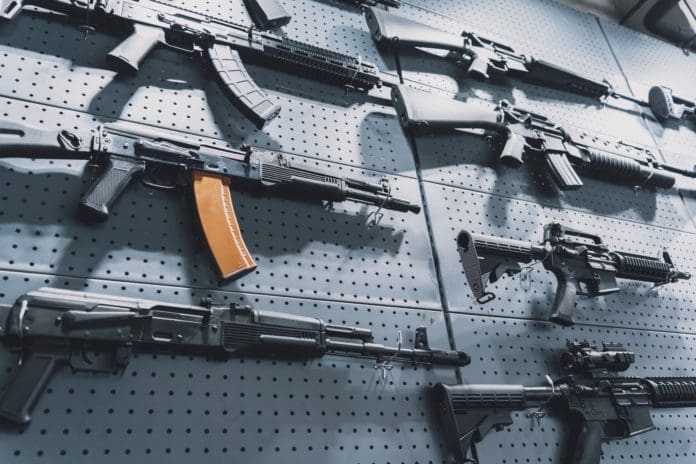In an expected move, national gun advocacy groups have taken action to challenge Illinois’ restrictive ban on assault weapons and high-capacity magazines at the U.S. Supreme Court level. The Colorado-based National Association for Gun Rights and the Nevada-based Firearms Policy Coalition filed petitions on Monday urging the highest court in the land to overturn a ruling by the 7th Circuit Court of Appeals. This appellate court had decided in a 2-1 vote against issuing a temporary injunction on the Illinois law, controversially suggesting that the constitutional rights enshrined in the Second Amendment have their limits.
The move by these organizations is part of a broader, strategic litigation effort initiated immediately following the enactment of the Illinois ban in January 2023. This legislation was the state’s narrowly focused response to a series of tragic mass shootings across the country, notably including a devastating incident during a Fourth of July parade in Highland Park in 2022, where a gunman using a rifle with a high-capacity magazine claimed seven lives and caused widespread harm.
The National Association for Gun Rights has been actively contesting both the state-level prohibition and a similar ordinance in Naperville, Illinois, through a lawsuit in the Northern District of Illinois. Despite facing a setback in February 2023, when a federal judge declined to issue a preliminary injunction that would halt the law’s enforcement, their fight continues unabated.
Similarly, the Firearms Policy Coalition, in collaboration with the Illinois State Rifle Association and the Second Amendment Foundation, succeeded in obtaining a preliminary injunction in the Southern District of Illinois, a clear indication that the ban could indeed infringe upon Second Amendment rights. This victory underscores the legal contention that the law’s broad prohibitions are constitutionally questionable.
Both cases, among others, were consolidated for an appeal before a three-judge panel of the 7th Circuit, which ultimately decided not to prevent the law’s implementation. This decision has now propelled the issue to the doorstep of the U.S. Supreme Court, signaling a critical juncture in the ongoing defense of gun ownership rights.
Another petition was filed recently to challenge a similar ban in Maryland, while Virginia lawmakers are pushing for approval of a bill to ban so-called assault weapons as well. As these bans continue to crop up at the state level, they continue to be challenged and ultimately it may take the Supreme Court to settle the issue.





Who wrote this drivel? Shall not be infringed is enshrined in the constitution even in ILLannoy. My lowly rifle is not an “assault rifle”🙄☹️
It’s just what the state is referring to them as in their legislation. We’re all aware of the vocabulary game they play.
https://isp.illinois.gov/Home/AssaultWeapons
Rest assured the latest “Petition” will fail to focus on the fact, “Gun Control is Rooted in Racism.” And its inherent, blantent Discrimination is alive and well today in the Land of Lincoln. Until the bull is grabbed by the horns it’s just more neutered Gun Talking azzhats peeing in the wind.
https://youtube.com/watch?v=m-l7TO01-Sg&feature=shared
“Bull by the horns?” Doesn’t it depend on Whose Ox …
Gets Gored?
Of course it won’t, since that is not the issue presented.
u again…Take up knitting.
My ox doesn’t produce yarn.
I could knit my brows while I’m contemplating your inane postings, I suppose. Keeps me in stitches. And no snitches!
“The Colorado-based National Association for Gun Rights and the Nevada-based Firearms Policy Coalition filed petitions on Monday urging the highest court in the land to overturn a ruling by the 7th Circuit Court of Appeals.”
OK, it looks like it’s officially in Thomas’ in-basket.
Yay! 🙂
The court’s annual session ends in a few months. Rough timeline on when the court grants or denies cert.? This fall or winter? If that happens, I’m gonna need to order a lot of popcorn and butter… 😉
My understanding is that this petition is from a circuit court denying a motion for a preliminary injunction, and that there was no trial or other fact finding in the trial court. Historically, the Supreme Court has denied review in cases where a final judgment has not been entered.
The Maryland case, for which a petition for review was also recently filed, arises in a different, but twisted, procedural posture. There, the Supreme Court granted review of a final judgment upholding the assault weapons ban, which was reversed and remanded by the Supreme Court for reconsideration in light of Bruen. (In the vernacular, the case was GVR’d.) But before the 4th Circuit panel could issue a decision (which had been languishing since oral argument in December 2022), the 4th took the matter up en banc, in and of itself an unusual development. Nontheless, there is a final judgment previously in the Court of Appeal, even of the 4th still has failed to review its prior decision. Typically, however, the Court will merely order the 4th to expedite its proceedings instead of granting review.
Despite the procedural shortcomings of these cases vis-a-vis a grant of cert., the Court is undoubtedly aware that there are a number of “assault weapons” bans percolating that have been voluminously briefed, which all turn on the question of whether there are historical analogues allowing such bans, as opposed to any intricate determination of facts. The Court must know that it will face the question of assault weapons bans, and therefor will have to either grant review or simply allow these bans to survive by declining to do so.
Mark, of these three petitions, Barnett v. Raoul, Harrel v. Raoul, and Bevis v. City of Naperville, care to guess which might make the cut?
yeah, that was a real deep dive.
look what might happen.
“look what might happen.”
Oh, yeah. 😉
If they say yes and grant cert., the sound of leftist heads exploding and the wails of tortured anguish will be sweet, sweet music to our ears…
Don’t count on it. The USSC is becoming so squishy, I expect to see rulings handed down on parchment with wavy tear-offs, just like newer rolls of Charmin.
“The USSC is becoming so squishy, I expect to see rulings handed down on parchment with wavy tear-offs, just like newer rolls of Charmin.”
‘Bruen’ was ‘squishy’?
‘Bruen’, the case that ruled the two-step approach on constitutionality was one step too many?
That one? 🙁
i’m with you. my point was my ‘puter box is only filled with hopes and dreams, the eventual substance tends towards disappoint.
it’s an endless parade of just out of reach.
TRUMP 2024.
I’d count on 3 of the 6 conservative justices as a sure bet, and question the other 3 to vote in step. Yeah, I’d call that squishy too. And none of them seem too concerned with the perversion by the states AFTER the Bruen ruling.
The phrase “narrowly focused response” is using the terminology of the enemy. If you are quoting them, then use quotes. Banning a whole class of firearms isn’t narrowly focused!
Yeah….yeah this site has just gone to crap. Guess it was fun while it lasted.
In the absence of any evidence tending to show that possession or use of a “shotgun having a barrel of less than eighteen inches in length” at this time has some reasonable relationship to the preservation or efficiency of a well regulated militia, we cannot say that the Second Amendment guarantees the right to keep and bear such an instrument. Certainly it is not within judicial notice that this weapon is any part of the ordinary military equipment, or that its use could contribute to the common defense. Aymette v. State, 2 Humphreys (Tenn.) 154, 158.
United States v. Miller, 307 U.S. 174 (1939)
So the court used the introductory statement of the 2nd Amendment to mean that arms of efficacy to the military are specifically protected. Their ruling was based on the lack of evidence presented that a short barreled shotgun was of use to the military because Miller was not represented. In reality, all arms are of efficacy to the military and thus protected. Simply because a semiautomatic rifle isn’t the current choice, it has been in the past and thus doesn’t suddenly become not protected.
Comments are closed.